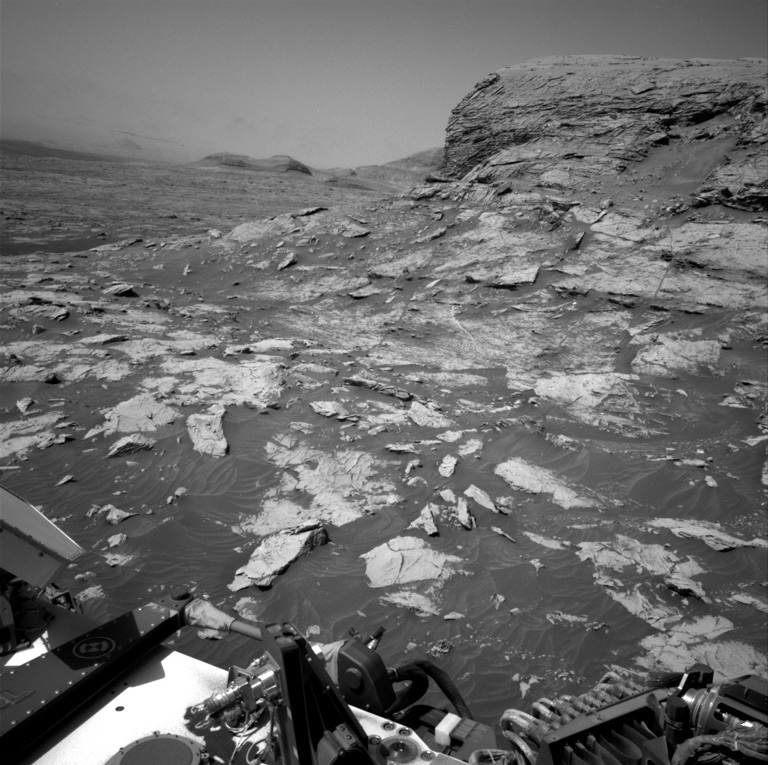3 min read

Sol 3081 will be a busy one for Curiosity. The rover is still near the transition between the "Glasgow" member and the sulfate-bearing unit; as this is a major geologic transition, the science team is trying to get as much data as possible before moving away.
First up, the rover is planning to do a “touch-and-go,” performing contact and targeted remote science before driving away. First, Curiosity will get some arm exercise in, doing APXS and MALHI observations of “Puymangou,” a dark spot on a bedrock slab in front of the rover. Science will test if the color difference represents a difference in composition relative to the nearby bedrock. For the Rover Planners (of which I am one today), this is a challenging target because it is small and a little raised relative to the surrounding parts of the rock. We also need to avoid the nearby pockets of sand trapped by the surface roughness of the rock. After the arm activities, Curiosity will stow the arm to prepare for driving.
Before driving away, there is a set of targeted science observations with Mastcam. In addition to a small 3x3 mosaic of the contact science target, we will take a large stereo mosaic of "Mont Mercou" from the southwest to get more views of the sedimentary structures of the ridge. In addition to all the images we have taken from other locations around Mont Mercou, this last set will enable us to build a complete 3-D model of it. In this same pre-drive time, ChemCam will also do a passive sky observation as part of our environmental suite.
Then, we say goodbye to Mont Mercou and begin our drive, about 30 meters to the south-southwest. The terrain in this area is both quite rocky and has patches of sand, providing another challenge for the Rover Planners. Curiosity will wind her way around some of the sharper rocks and bigger patches of sand in order to land on a high point that should provide a good viewshed for planning the next drive, as well as landing on some bedrock to enable contact science in the weekend plan. The Rover Planners (and Curiosity’s wheels) are definitely looking forward to being further south, where the terrain is more benign and our drives will no longer need to look like a slalom track.
After the drive, we will take some imaging to support the next drive, as well as some additional ChemCam observations of the sky and its calibration targets in order to continue to monitor the health of the instrument. Just around sunset, we will do another set of cloud observations with Mastcam and Navcam in the hopes of getting yet another spectacular image of the Martian cloudy skies, and a MARDI image of the ground below the rover. Finally, early the next morning we will do some more environmental observations, including a dust devil movie and a supra-horizon movie.
On the second sol of the plan, we do more environmental atmospheric observations of the sun, the horizon, more dust devil movies, as well as some twilight Mastcam images.
Written by Ashley Stroupe, Mission Operations Engineer at NASA's Jet Propulsion Laboratory







